Browse Houses
Search Results: Returned 5516 records. Displaying results 4601 – 4700
| House name | Description | |
|---|---|---|
| Rockforest | A home of Bindon Blood throughout the first half of the 19th century and later of his son, Bagot Blood, who died in 1897. It was held in fee by Bindon Blood at the time of Griffith's Valuation, when it was valued at £12. The house shown on the 1st edition Ordnance Survey map was replaced by a later house a short distance away. A house is still extant at this site. | |
| Rockforest Lodge | This house was the residence of Pierse Creagh in 1837. At the time of Griffith's Valuation Henry O. Seavers occupied this house, valued at £24 and held by him in fee. This house is still inhabited. In 2010 it was offered for sale. see http://www.michaelhdaniels.com/index.cfm?fuseaction=propsearch |

|
| Rockfort | Valued at £4 in the mid 19th century when it was occupied by Thomas Bourke who held from David Ruttledge. The Westport Estate Papers contain two 17th century maps of Levallyroe in the possession of Gerald Dillon and held from the Blakes. The Malones also had an interest in Levallyroe and Boleyboy. | |
| Rockfort House | This house was the property of John Hornibrook at the time of Griffith's Valuation when it was valued at almost £9 and unoccupied. The house is still extant. He was also the owner of the nearby Rockfort Mill [W526587], valued at almost £13 and leased to Johanna Hurley. The latter property is labelled "disused" on the 25-inch Ordnance Survey map of the 1890s. |
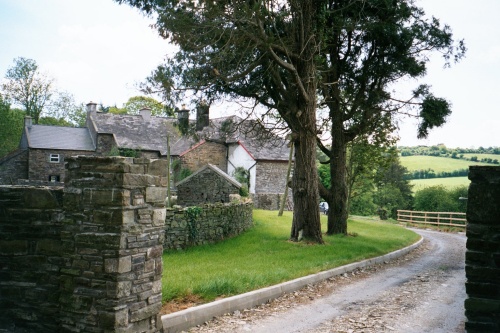
|
| Rockfort Lodge | Charles Rochfort was occupying this property at the time of Griffith’s Valuation, leasing from the Dickson estate. It was then valued at £20. The house is still extant but does not appear to be in good repair. | |
| Rockgrove | The seat of the Dring family in the 18th and 19th centuries, valued at £50 in the early 1850s. Bence Jones writes that it was sold by the Drings in the early 20th century, valued at £80 in 1906, and was restored in the 1970s. The house is now used as offices. |
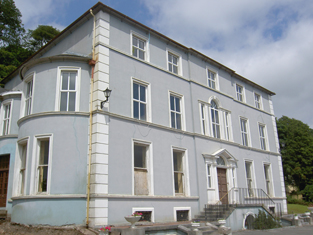
|
| Rockgrove | A house valued at £18.10 shillings was held by John Good from John Carney at Rockgrove in the early 1850s. John Good is also recorded as resident in this house by Lewis in 1837. | |
| Rockhill | Occupied by John Burne in 1814 and described as a tolerably good farmhouse at the time of the first Ordnance Survey. Occupied by E. Hodson in 1837 and by Thomas Wilson who held it from James Wilson in the 1850s. Thomas Wilson was still resident in the 1870s. |

|
| Rockhill House | The earlier house at Rockhill was the residence of Daniel Higgins in 1814. At the time of Griffith's Valuation, it was occupied by Dominick D'Arcy and was valued at £9. A new house appears to have been built in the latter half of the nineteenth century and, in the 1870s, it was the seat of Lionel D'Arcy. Rockhill is stil extand and well-maintained. |
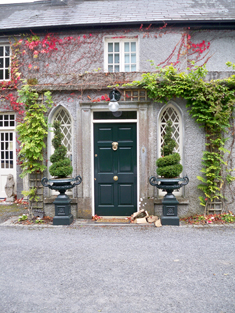
|
| Rockhill House (Raphoe North) | At the time of Griffiths Valuation in the 1850s, Rockhill was held in fee by John Vandeleur Stewart when it was valued at £55. Local sources suggest the house was acquired by Stewart from the Chambers family in the 1830s. O'Carroll discusses the ownership by the Cooch and Pratt families of the Rockhill estate. In 1814 Leet had recorded Daniel Chambers as the occupant of Rockhill. By 1906 it was owned by Alexander C.H. Stewart and valued at £52. Later in the 20th century it served as a base of the Irish Defence forces. It is now a luxury hotel. |

|
| Rockingham | Sir Robert King, Viscount Lorton, built Rockingham House around 1810 and the family moved there from King House in Boyle. At the time of Griffith's Valuation Rockingham was valued at £180. In 1903 Rockingham became the county residence of the Lord Lieutenant Lord Dudley. It was destroyed by fire in 1957 and subsequently demolished. Only some of the servants' tunnels as well as other estate buildings remain. The site is now occupied by Lough Key Forest Park. |

|
| Rockingham House (Waterford) | At the time of Griffith's Valuation Richard W. Morris was leasing this property from Mrs. Elizabeth Hassard, when it was valued at £65. The building at this site now is named Rockenham Court. | |
| Rockland House | Rockland House, now the Athenaeum Hotel, was leased by the Ray family to William Snow at the time of Griffith's Valuation. It was valued at over £52. The hotel history indicates it was built in the early nineteenth century by the White family who had major shipbuilding interests in Waterford at that time. See www.athenaeumhousehotel.com for more information. | |
| Rocklands | A house occupied by various agents to the Earls of Lucan, including Ellison, Davis and Larminie. In 1786 Wilson refers to it as the seat of Mr. Ellison. At the time of Griffith's Valuation, it was occupied by Neal Davis, holding from the Earl of Lucan, and valued at £15. The site appears to be occupied by a larger modern building. | |
| Rocklands (Oranmore) | Rocklands was occupied by George Ingham in the 1850s when it was valued at £13. In 1906 it is recorded as the property of Isabella Ussher and was still valued at £13. The house is still extant and occupied. |
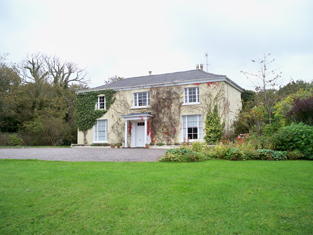
|
| Rocklawn | The OS Name Books give the name of this house as Rockland and state that it was the residence of the Browne family though they claim that the townland of Pollaghrevagh was the property of Lord Clanmorris. At the time of Griffith's Valuation it was occupied by James French and was valued at £12. By 1906 it was owned by Richard French. Rocklawn House is no longer extant. It is described as "in ruins" on the 1933 printing of the 6" OS sheet for Galway. |

|
| Rocklow | Taylor and Skinner records Rocklowe as the residence of Lowe Esq in the 1770s. Rocklow was the home of Benjamin Frend and his wife, Eliza Gough, in the first half of the 19th century. Benjamin was resident there from at least 1814 to the 1850s. Griffith's Valuation records that it was held from Hugh Barton and was valued at £37+ in the early 1850s. This house later belonged to the Massys and is still in use as a residence. In 2022 it was offered for sale. |
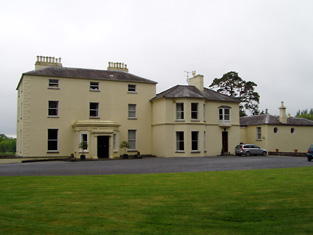
|
| Rockmills Lodge [Rockmills House] | The lodge was the residence of Colonel Richard Aldworth in 1814. Hajba writes that it was built as a shooting and fishing lodge by Colonel Richard Aldworth in 1776 and that he left the property including the mills to his wife's nephew, Charles Deane Oliver (grandson of Robert Oliver of Cloghanodfoy). Occupied by Mrs Sarah Oliver in 1837 and at the time of Griffith's Valuation and held by her from the representatives of Bond Lowe. The buildings were valued at £25 and she was leasing a flour mill and other buildings valued at £170 to P.L. Lyster. This property was advertised for sale in June 1856. The house was burnt in May 1921 during the War of Independence when it was the residence of Charles Deane Oliver. In 1942 the Irish Tourist Association Survey noted that it had been rebuilt by the Walsh family and was then (1942) occupied by the Casey family. It is still extant. The mills are now in ruins. |
![Photo of Rockmills Lodge [Rockmills House]](https://landedestates.ie/storage/img/orig/1591.jpg)
|
| Rockmore or Blakeland Lodge | . This property is named as Blakeland Lodge on the 1st edition OS Map and in the Ordnance Survey Name Books.It appears as Rockmore on the 25-inch map of the 1890s. At the time of Griffith's Valuation it was occupied by William Kelly and valued at £15. In 1906 it was the property of Raymond Kelly and was still valued at £15. It is still extant and has recently been renovated. |
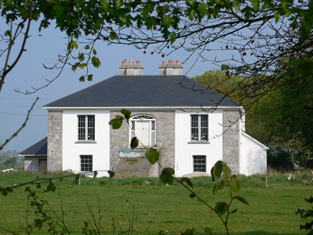
|
| Rockmullan House | Marked on the first edition Ordnance Survey Map (1836). In the mid-19th century occupied by the Rev James J. Rowley and held from Thomas T. Rowley, when the rateable valuation was £12. The home of the Lavelles in the 20th century. | |
| Rocksavage | This house was the home of the Plunkett family from about the mid-18th century. By the mid-19th century, valued at £25, it had become the home of Charles Plunkett Kenny or Kenney, whose mother Charlotte had inherited the property. Charles still lived there in 1901 and his daughters in 1911. The house is now a ruin. | |
| Rocksavage | The home of Waldrons and Ormsbys in the 18th century.In 1786 Wilson refers to it as the seat of Mr. Waldron. The residence of Jeffrey French in 1814 and occupied by Mr Smith at the time of the first Ordnance survey and by Samuel Hodson who held it from William Longfield in the 1850s. Occupied by Robert O. Longfield in 1906. A modern house now occupies the site but some old farm buildings still remain. |

|
| Rocksavage | This house was not built at the time of the first edition Ordnance Survey circa 1840. Built for John Craven Mansergh [in the 1850s] on land that formerly belonged to the Martin family. In 1942 the Irish Tourist Association Survey reported that Rocksavage was the residence of Dr. Foley. This house, situated close to the Awbeg River just south of Castletownroche, is still extant. | |
| Rockshire House | Leased by Samuel Grubb from Richard C. Pope at the time of Griffith's Valuation, when it was valued at £62 10s. In 1837 Lewis refers to Rockshire as the seat of the Hon. Mrs. Greene. The building is still extant and occupied as apartment accommodation. |
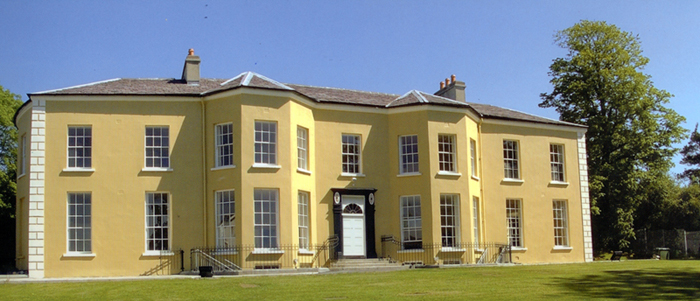
|
| Rockstown | Marked on the first edition Ordnance Survey map this house was occupied by William Nally at the time of Griffith's Valuation and held from the Lynch Blosses. The National Inventory of Architectural Heritage notes its connections with P.W. Nally, a member of the Irish Republican Brotherhood and a well-known late nineteenth century athlete influential in the founding of the Gaelic Athletic Association. The house is now a ruin. |
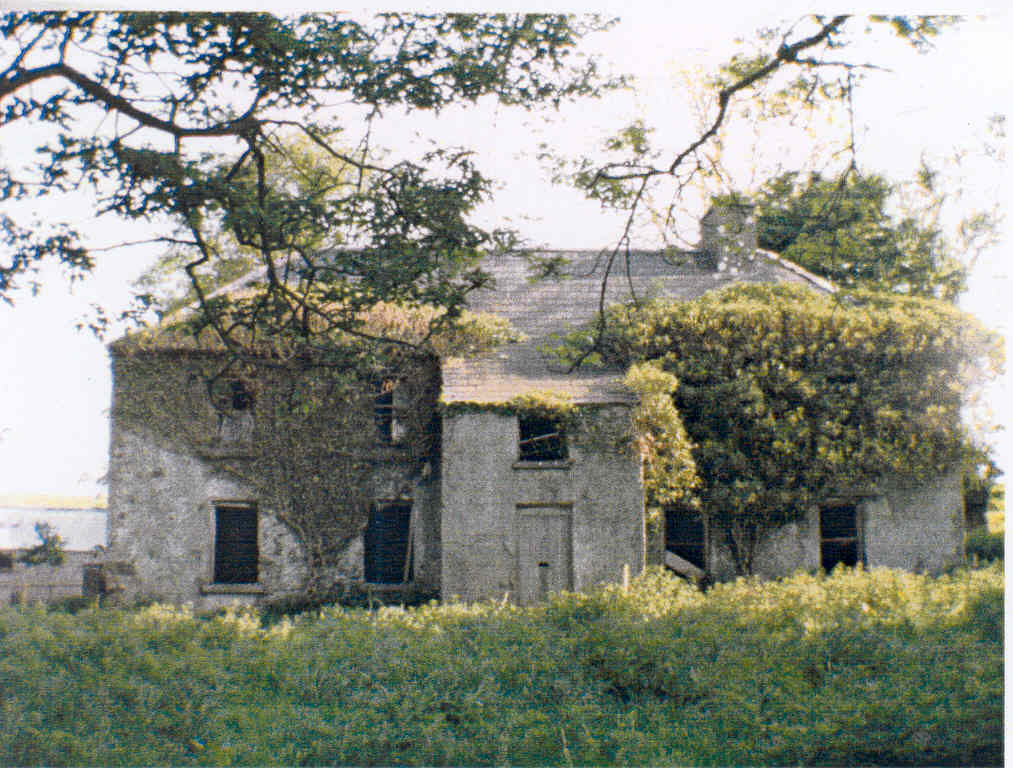
|
| Rockstown House | A building valued at £18 at the time of Griffith's Valuation, occupied by Chartres Brew Maloney and held from James Kelly. Chartres Brew Molony, second son of Patrick Molony of Cragg married his cousin Alice, daughter of James Barry of Rockstown, in 1841.Rockstown Castle was inherited by James Kelly's grandson, Basil James Kelly, in the 20th century and was left by him to his nephew Derrick Morley in 1945. It is still extant |

|
| Rockvale | Originally a D'Arcy home, built in the 1780s. Rockvale was the home of J. D'Arcy in 1837. By the time of Griffith's Valuation the house was occupied by John Mullins and valued at £7. 10 shillings. Mullins was leasing from the Marquess of Thomond. It is labelled Rockvale House (Constabulary Barracks) on the 25-inch Ordnance Survey map of the 1890s and is now a ruin. |
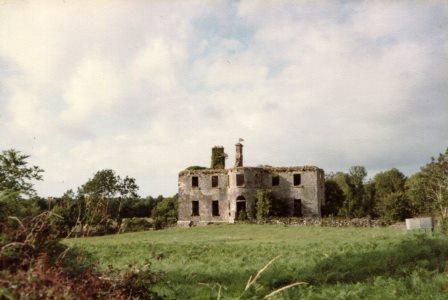
|
| Rockvale | Lewis refers to this recently erected mansion of Samuel George Beamish. In the early 1850s it appears to be unoccupied and valued at £12, the land was held by Michael Kelleher from S. G. Beamish. This house no longer exists. | |
| Rockvale | Reverend M. Moore was the proprietor of Rockvale in 1837. In 1840 the Ordnance Survey Name Books note it as the seat of Rev. A. Armstrong and describe it as " a commodious dwelling house". Francis J. O'Neill was the occupier in the early 1850s. He held the house, offices and flour mills, valued at £61 from John F. Waller. A house is still located at this site. | |
| Rockvale (Castletownroche) | At the time of Griffith's Valuation, Leslie O'Callaghan was leasing this property from Eustace estate when it had a valuation of £8. In 1942 the Irish Tourist Association survey noted that the ruins of what had been a Nagle property were still visible to the rear of Rockvale. The Survey also recorded that Leslie O'Callaghan, who "had lived there about 100 years ago" had been killed in Cork and that the property had come into the ownership of the Annesley estate. It was later sold to the Patterson family and the house is still extant. |
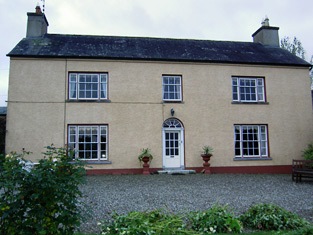
|
| Rockview | In the possession of the O'Loghlens for most of the 19th century. John Kerin occupied the house in 1814, R. O'Loghlen in 1837 and Bryan O'Loghlen at the time of Griffith's Valuation. A house is still extant at this site. | |
| Rockview | A 2 storey house on the Croker estate, built in 1837 for £400, it was occupied by George Peacock circa 1840 and in the early 1850s when it was valued at almost £12. There is still an extant house at the site. |

|
| Rockview | David Cagney was the lessor of several properties in Crookhaven at the time of Griffith's Valuation. One of these was Rockview, leased to Frederick Monks and valued at £11. In 1837 Lewis had noted Rockview as the seat of Florence McCarthy. It is not marked on the 25-inch Ordnance Survey map of the 1890s. | |
| Rockview (Ballygunner) | In 1848, James Shannon was leasing this property from the Roberts estate when it was valued at £15 3s. The original house does not appear to be extant. | |
| Rockview (Clashmore) | Leased by Richard Bayley from the Villiers-Stuart estate at the time of Griffith's Valuation, when it was valued at almost £7. It is labelled Rockview on both the 6-inch and 25-inch Ordnance Survey maps. There is still an extant house at the site. | |
| Rockview (Decies) | Joseph N. Power was leasing this property from Sir Edward Kennedy's estate in 1851 when it was valued at £14 10s. On the 25-inch Ordnance Survey map of the 1890s it is named as Rockview. The house is still extant. | |
| Rockview (Dorrha) | In 1840 the Ordnance Survey Name Books refer to Rockview House as "a good mansion house, the residence of Captain Corrigan". By the time of Griffith's Valuation this house was occupied by John Hemsworth, leasing from Mary Nunn and representatives of Richard Donovan. The buildings were valued at almost £7. Rockview House is still extant. |
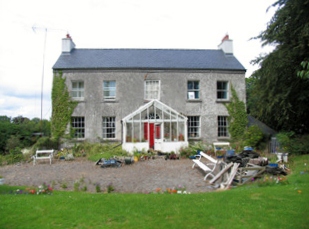
|
| Rockview (Inch) | In 1837 Lewis refers to the "very pretty residence of Mr Fitzgerald" proprietor of the extensive limestone quarries at Carrigacrump. The house was named Rockview on the first Ordnance Survey map. Teresa Fitzgerald was the occupier in the early 1850s holding the property from Colonel William H.M. Hodder, the buildings were valued at £15. Teresa Fitzgerald (nee Coppinger of Rosmore) married James Fitzgerald and they had a son Maurice and daughters Teresa, Mary etc see ''The Barrys of County Cork''. Margaret Fitzgerald of Carrigacrump owned 83 acres in the 1870s. Her estate at Rockview was advertised for sale a number of time in the mid 1870s. There is still an extant house at the site. | |
| Rockville | At the time of Griffith's Valuation occupied by Michael Mockler and held from the representatives of Matthew Hendly, the buildings were valued at £26. The Mocklers advertised the sale of their interest in July 1851 and July 1853. The sale rental records the lease of Rockville by Ferguson Hendley to the Reverend James Mockler for 3 lives in July 1841 and that £2,000 had been spent on the house. Caroline Bourke occupied a mansion house with 37 acres in the townland of Licklash in 1906. It was valued at £60. In the 1870s Michael Bourke of Lecklash owned 37 acres. This house later became a summer home of Sir Oswald Mosley. Also known as Isleclash House. |
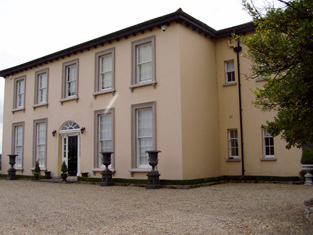
|
| Rockville | The Barrys were inhabiting Rockville by the mid 18th century. William Barry was resident in 1814 and his seventh son Thomas Barry in 1837. In the early 1850s Garret Barry was occupying this house which he held from Sir William Clarke. It was valued at £15.15 shillings. | |
| Rockville | The family home of the Radley family in the 18th and early 19th century. Occupied by Cornelius Ahern and held from the representatives of Henry Longfield at the time of Griffith's Valuation. The buildings were valued at £9.15 shillings. | |
| Rockville | Home of the Lloyd family in the 18th and 19th centuries. Valued at £45 in the 1850s. Sold in 1917 to George Frayne of Ballaghderreen. Demolished in the second half of the 20th century. |

|
| Rockville (Ballyshannon) | At the time of Griffiths Valuation in the 1850s, this property was being leased to Mary O'Neill by Edward Jones. Local sources suggest, however, that it was a residence of the ffolliott family and burned in the 1920s. | |
| Rockville (Carbury) | Edward Homan was leasing two properties, both valued at over £4 and described as Bathing Lodges, at Culleenamore, from Samuel Barrett, at the time of Griffith's Valuation. One house is noted on the OS 1st edition sheet as Rockville and the second as Bocage. | |
| Rockville (Crossdoney) | Named on the first edition six inch Ordnance Survey map (publ. 1837), Rockville was located on the Nesbitt estate to the north east of Lismore Castle, on the outskirts of Crossdoney. In the 1830s it was the home of John C. Tatlow and in the 1850s of Samuel Moore, when the buildings were valued at £20 for rates. Occupied by Dr John Stirling Greer and his wife in 1901 and held from Thomas Cosby Burrowes. Another medical family named Hallowes was resident in 1911. Apparently still extant and occupied. | |
| Rockville (Inishowen) | This property was leased by John Canning from the Harvey estate at the time of Griffith’s Valuation, when it was valued at £14. The site also included a flax mill valued at nearly £5. The National Inventory of Architectural Heritage suggests it was built c.1800 and served as a residence for the local Presbyterian minister at times during the 19th century. Rockville is still extant and occupied. | |
| Rockville (Loughkeen) | The Ordnance Survey Name Books refer to Rock Ville House in the parish of Loughkeen as the residence of Mr. S. Lloyd in 1841. At the time of Giffith's Valuation, a house in this townland valued at £10 was occupied by William Kent, leasing from Jane Downs. On the 25-inch map of the 1890s this house is labelled Carrig Cottage. It is still extant. | |
| Rockwell | The main residence of the Lynch family throughout the 19th century, valued at £13 in the mid 1850s. |

|
| Rockwell | Wilson refers to Rockwell as the seat of Andrew Roe in 1786. In 1814 and 1837 John Rowe/Roe was living at Rockwell. By the time of Griffith's Valuation John Bushe was the occupant, holding the property from the Court of Chancery. The buildings were valued at £40.16 shillings. John Bushe was the resident in May 1856 when the estate was advertised for sale. The buildings were altered and added too in 1865 after the arrival of the Holy Ghost Fathers who started a school. This school still operates as one of Ireland's well known boarding school. http://www.rockwellcollege.ie/missionstatement.html |
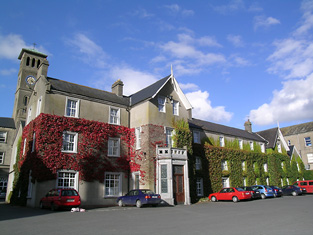
|
| Rockwood | John Galway is recorded as the owner of Rockwood at the time of Griffith's Valuation when it was valued at £20. In 1906 Rockwood House was owned by Robert W. Holmes and valued at £20. It was occupied by the Holmes family until after WWI. It was later the property of the Fox family. It was restored in the mid-1980s and is now extant and occupied. |

|
| Rockwood | At the time of Griffith's Valuation Hester Cullen was leasing a house valued at £10 at Deerpark, barony of Rosclogher to Thomas Davis, MD. A house still exists on the site of the original Rockwood House. | |
| Rodeen | A Falkiner residence from at least 1837. It was the home of Joseph Falkiner who held the property in fee. He was one of the eleven sons of the Reverend R.D. Falkiner of Mount Falcon. The house was valued at £22. It was advertised for sale in July 1860, Mrs Anne Falkiner and Richard J. Falkiner were the tenants. The house came on the market again in May 1867, part of the 105 acres for sale at Rodeen, the estate of Octavius La Touche. This house is still in use as a residence. |

|
| Roden House | In 1841 the Ordnance Survey Name Books describe Roden House as "a good dwelling house". C.W. Hemsworth is noted as the proprietor. At the time of Griffith's Valuation, it was occupied by Thomas R. Deane, leasing from Thomas Hackett, when the buildings had a valuation of almost £3. The National Inventory of Architectural Heritage dates this property to 1784. It is still extant and occupied. |
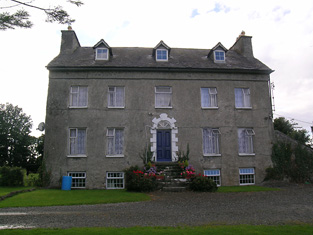
|
| Roebuck | Roebuck was a Lynch home from at least the early 19th century when Edward Lynch was recorded as resident in 1814. Lewis records W. Reilly as the proprietor of Roebuck. In the 1850s Joseph Lynch was the occupant recorded in Griffith’s Valuation, when the buildings were valued at £15 and held from the Representatives of William O’Reilly Adams. By 1906, Henry Galligan was occupying this 'mansion' house valued at £15 for rates and 365 acres of untenanted land. | |
| Roesborough | Occupied in the 1770s by Sadler Esq. In 1786 Wilson states that it was the seat of James Roe. Occupied in 1814 and 1837 by James Roe and in the early 1850s by his son George who held the property in fee. The house was valued at £32.15 shillings. The representatives of Richard Sadlier were the tenants of Roesborough in 1873. This house is now a ruin. |

|
| Roo | The original Roo House was a single story L-shaped building. Only a small portion, which has been incorporated into farm buildings, now remains. Tradition indicates that it was leased by Bishop Nicholas Archdeacon sometime in the early 19th century. In the 1830s it was the residence of a Mr. Sellers. The house and over 100 acres was leased by the Curtin family from the Gregory estate in the 1840s but the Gregorys were later obliged to sell this part of the estate. A two-story house, now derelict, was erected on the site in the early 20th century. The property is still held by the Curtin family. |

|
| Rooaun Lodge | At the time of Griffith's Valuation occupied by John Morton and held by him in fee, valued at £3. A house at Rooaun valued at £18 was occupied by T.A.F. O'Flaherty in 1906. | |
| Rookwood | The house, located on the border between counties Galway and Roscommon, was built in the late 1720s by a branch of the Ormsby family of Tobervaddy. Jane Ormsby married Robert Waller. Both Wilson and Taylor and Skinner record that Rookwood was occupied by Major Waller in the 1780s. The house was later leased by the Thewles family. Edmund Kelly purchased the lease of Rookwood from his cousin, James Thewles, in 1800. The house was occupied by the Taaffes in the early 19th century and by the Kellys from the 1830s. In 1900 Dr Charles E. Crean of Ballyhaunis bought Rookwood and sold it to the Land Commission in 1922. The house was intermittently occupied until the 1940s and gradually became derelict. |

|
| Rosanna | Rosanna was the home of the Webb family in the 19th century, occupied at the time of Griffith's Valuation by Hannah (widow of the Reverend Dr John Webb) valued at £75 and held from St John Jeffreys. A building is still located at this site. | |
| Rosbrien | A home of a branch of the Quin family descended from John Quin, second son of Thady Quin (1645-1726). Wilson, writing in 1786, refers to Rosbrien as the fine seat of Mr. Quin. It is labelled Rossbrien House on both the 1st and 25-inch edition Ordnance Survey maps but is no longer extant. | |
| Rose Hill | At the time of Griffith's Valuation Alexander McNab held Rose Hill House valued at £15 with 120 acres from the Marquess of Thomond. The National Inventory of Architectural Heritage shows a house at this location dating from the 1890s. |
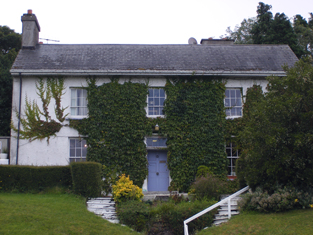
|
| Rose Hill | Occupied by William Rumly in 1814 and Lewis records T.H. Rumbley residing at Ballinacorra Lodge in 1837. Mountiford Longfield was the occupier in the early 1850s. Held by him in fee and valued at £15. This house is no longer occupied. |
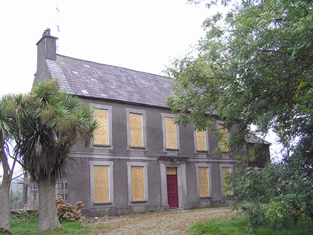
|
| Rose Hill | Rose Hill is recorded as the home of John Lopdell in 1814. | |
| Rose Hill | A house beside the River Shannon occupied by P. O'Callaghan in 1837 and by James O'Grady in the mid 19th century who held it from Mrs O'Callaghan. It was valued at £11. Weir writes that his successor was Henry O'Grady who died in 1902. The house is now a ruin. | |
| Rose Hill (Inishowen) | Andrew McClen was leasing this property from the Dogherty estate at the time of Griffith’s Valuation, when it was valued over £10. | |
| Rose Hill (Sligo) | McTernan writes that this was originally the residence of Thomas Reed and known as Lakeview. It passed to his son-in-law, Vernon Davys, in the early 1830s. After the 1840s it was leased to a succession of tenants. It was demolished in the 1980s to make way for modern housing. | |
| Rose Lodge | William Warren was occupying this property at the time of Griffith's Valuation, when he seems to have been a joint lessor with Richard Warren. It was valued at £11 at the time. Now a ruin. | |
| Rose Lodge or Dingleicoush | Penelope St. George was leasing this property from the Conolly estate at the time of Griffith’s Valuation, when it was valued at £17. The house is no longer extant. On some earlier maps it is labelled as Rose Lodge but on the 25-inch map of the early 20th century it is labelled Dingleicoush. | |
| Rose Ville (Clonmel) | At the time of Griffith's Valuation, Mrs. Anne Murray was leasing this property from Abraham Grubb when it ws valued at £33. The National Inventory of Architectural Heritage states that it was designed by Tinsley for the Murray family. Rose Ville has been in use as the Loreto convent since 1881. |

|
| Rosebank | Thomas Marmion was leasing this property to Avisa Clarke at the time of Griffith's Valuation, when it was valued at £11 10s. The house at this site is labelled Russagh Cottage on the 1st edition Ordnance Survey map but as Rosebank on the 25-inch map of the 1890s.The National Inventory of Architectural Heritage states that the current house was built by the O'Donovan family in the 1860s as a dower house for Liss Ard House nearby. It is still extant and occupied. |
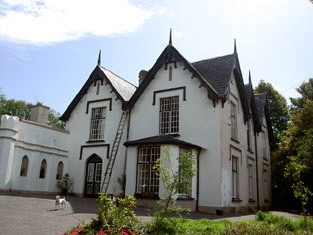
|
| Rosebank (Inishowen) | At the time of Griffiths Valuation in the 1850s, John Irvine was leasing this property from Reverend Samuel Montgomery's estate when it was valued at £12. In 1906 it was the property of Reverend H.H. Montgomery and valued at £44. It is still extant. |
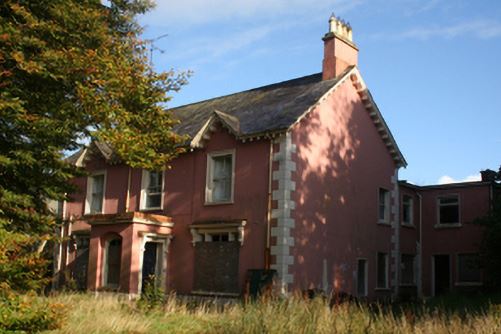
|
| Rosebank House | Rosebank House was built as a dower house for Liss Ard, possibly in the 1860s. It is still extant and occupied. | |
| Roseberry House | Described as 'an excellent two story slated house' in 1850. At the time of Griffith's Valuation it was held in fee by William Bodkin and valued at £15. This house is no longer extant. | |
| Rosefield | A house built in the early 18th century close to Rosefield Lake, it was the home of the Rose family and by the 1760s of Thomas Tenison and later of Alexander Montgomery. By the early 19th century Ralph Dudgeon was the occupant. He is recorded in the Tithe Applotment Book and in Lewis’ Topographical Dictionary. Valued at £16 and the residence of Samuel Mitchell held from the trustees of Captain Slake [Slack] circa 1860. Home of Henry Mitchell and his siblings in the early 20th century. | |
| Rosehill | The house at Rosehill is included in the sale of the estate of Denis Boland of Gort, in the Land Judges' Court, in the 1880s. It appears on the 1st editon Ordnance Survey map but is not marked on the 25-inch edition of the 1890s. An old entrance gateway survives. |

|
| Rosehill | Built by Sir Samuel O'Malley in the early 19th century but a ruin by the time of the first Ordnance Survey. Occupied by Mr P.Gibbons in 1814. | |
| Roseland Cottage | Rev. John Day was leasing this property to James Mitchell at the time of Griffith's Valuation, when it was valued at £9. Bary writes that nothing is remembered of the house now except its name. | |
| Rosemeade/Lisheen | At the time of Griffith's Valuation this property was leased by Matthew Rosengrave to Patrick Carrick and valued at £21. It was accompanied by over 200 acres. In 1814 Lisheen was the seat of Jer. Rosingrave. The house is labelled on both the first and 25-inch editions of the Ordnance Survey map as Rosemeade but today is known as Lisheen. It is still extant and occupied as a farm house. |

|
| Rosemount | A house occupied by S. Penrose in 1814, by W. Hawkes in 1837 and Joseph R. Harding at the time of Griffith's Valuation. He held the property from John L. Westropp and the buildings were valued at £25. There is still an extant house at the site. |
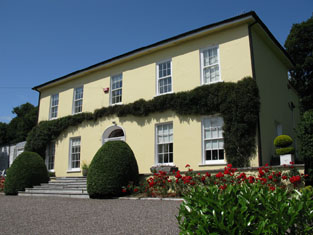
|
| Rosemount (Caher) | In 1840 the Ordnance Survey Name Books refer to Rosemount as a house in good repair, the residence of Robert Franklin. He is also listed as the occupier at the time of Griffith's Valuation, leasing from the Barton estate when the buildings had a valuation of £10. Robert Franklin of Rosemount is listed in Slater's Directory of 1846. The house is no longer extant. | |
| Roseneath Cottage | A villa style house built circa 1820, occupied by Robert Rogers in the early 1850s, valued at £27 and held from Patrick A. Shannon. |
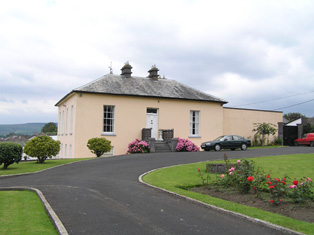
|
| Rosepark House | Tradition suggests that Francis Blake Forster let Clooneene (Ashfield) and built a house which he called Rosepark, after his wife, Rose Ffrench. Rosepark House is recorded by Lewis in 1837 as the seat of the Hugo family. It was leased by Michael Kane to George Crowe at the time of Griffith's Valuation. It was then valued at £12. Apart from some estate walls there is no evidence of this property now. | |
| Rosepenna Hotel | In 1906 the Earl of Leitrim's estate owned buildings valued at over £80 at Rosepenna, parish of Mevagh, County Donegal. This was the original Rosepenna Hotel, established as a golf resort in 1893. The original building was destroyed by fire in the 1960s. | |
| Roseville | At the time of Griffith's Valuation, Henry Beamish was leasing this property to Bernard Beamish, when it was valued at £16. Henry Beamish was also the owner of a flour mill [W381539] in the same townland, leased to William Norwood, and valued at £150. The mills do not appear on the 25-inch Ordnance Survey map of the 1890s. Roseville is still extant. | |
| Roseville (Tallow) | Leased by William Parker from the Devonshire estate at the time of Griffith's Valuation when the buildings were valued at £20 10s. It is also recorded as his address in the 1870s. Roseville is still extant and occupied. |

|
| Roseville Cottage | John Powell was in possession of two properties at Scrahane at the time of Griffith’s Valuation. Roseville Cottage, valued at £8 was vacant while the second property, was leased to Capt. John Kenny. Bary states that the house may have built and used by Lord Kenmare for one of his agents. It was still extant in 1994 but unoccupied and possibly in danger of demolition. | |
| Roshin Lodge | Francis Foster was occupying Roshin Lodge at the time of Griffith’s Valuation. It was leased from the Conyngham estate and valued at £18. Foster's daughter, Mary Stewart Foster, married John Stouppe Charley of Belfast. She sold the property after his death. In 1876 it was offered for sale by Arthur Sandys Forster. Roshin Lodge was described as 'a spacious dwelling house, comprising 29 apartments' at that time. By 1901 it was the residence of William Smyth and his family. He had died by 1911 but his widow and children still occupied the property. | |
| Roskeen | The home of the Power family which was held from the Kingston estate. Pierce Power occupied the house in 1837 and John Power in the early 1850s when the buildings were valued at £24. Arthur Irwin was the occupier of this house in 1906 and it is still lived in. |
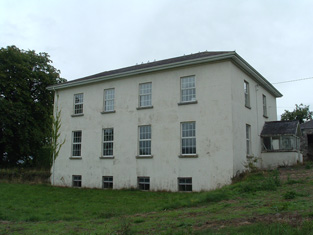
|
| Roslea Cottage | A house built after the publication of the first Ordnance Survey map. It was leased by Hugh Kivilican from the Brinkley estate at the time of Griffith's Valuation when it was valued at £3. It is still extant though in need of restoration and in 2012 was offered for sale. |
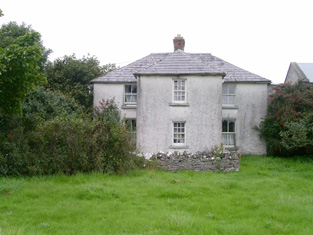
|
| Rosleague | This townland appears to have been leased to the Ffrenches of Castlefrench, county Galway by the D'Arcys of Houndswood and Gorteen, county Mayo on 31 Oct 1800. In the 20th century Rosleague House was leased for a time to Miss Robinson, the former head of the French School, Bray, county Wicklow. Sold by the Brownes to the O'Briens who sold on to the Foyles. The house now functions as the Rosleague Manor Hotel. http://www.rosleague.com/ |
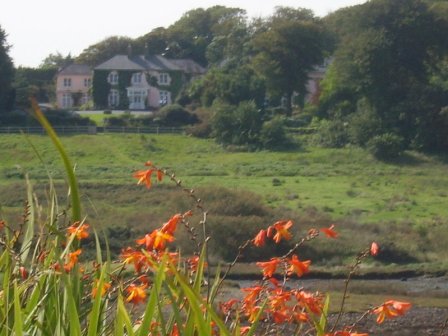
|
| Rosmindle | An O'Malley house occupied by a Mr Garvey in 1814, it was in ruins by the time of the first Ordnance Survey. | |
| Ross | In 1786 Wilson refers to Ross as the seat of Mr. Martin, It was held in fee by James Martin at the time of Griffith's Valuation, when it was valued at £20. On the shore of Ross Lake, the childhood home of the author, Violet Florence Martin is now open to the public for part of the year. Home of Claude Chevasse in the 20th century and later restored by the McLaughlin family, who reside there. |

|
| Ross | Home of the Pearse family in the 18th century, in 1786, Wilson refers to the house as the seat of Mr. Pearce. Ross was occupied by John Blake in 1814. In 1822 a new house was built at a cost of £2,500 and was the residence of T. Westropp in 1837. Thomas Westropp was the fifth son of Ralph Westropp of Clonmoney and Attyflin. At the time of Griffith's Valuation Ross was the residence of John Digan who held the property from Anne Westropp [widow of Thomas]. Buildings valued at £23 and some untenanted land at Ross were the property of Ambrose Hall in 1906. It is still extant. |
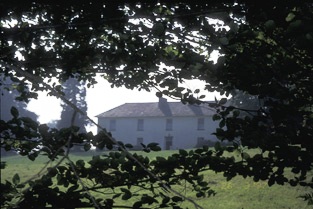
|
| Ross Abbey House (Rosscarbery) | Rev. John Hamilton was leasing this property from Elizabeth Jago at the time of Griffith's Valuation, when it was valued at £12. This house no longer exists. | |
| Ross Beg | At the time of Griffith's Valuation, Edward Carleton was leasing over 200 acres and a house valued at £5 from the Crofton estate at Ross Beg. | |
| Ross Cottage | The Earl of Kenmare’s estate included a forester’s house on Ross Island, marked on the 1st edition OS map as Ross Cottage. At the time of Griffith’s Valuation it was valued at £7 5s. In 1906 it was still part of the Kenmare estate and with the same valuation. The building is now in ruins. | |
| Ross Cottage/House (Dorrha) | In 1841 the Ordnance Survey Name Books refer to Ross Cottage as "an elegant built cottage, the residence of Mr. Smyth", the proprietor of which was R. Hemsworth. The house is labelled as "Ross House" on both the 1st and 25-edition Ordnance Survey maps. By the time of Griffith's Valuation, it was occupied by Thomas Hernon, leasing from John J. Hemsworth and the buildings were valued at almost £8. The house is still extant and occupied. |
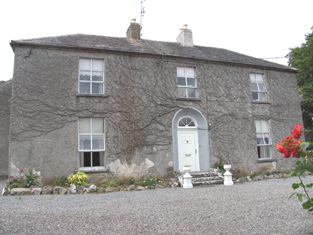
|
| Ross Hill | Ross Hill House was the home of George Ross Lewin and his descendants until the end of the 19th century. He was the second son of Harrison Ross Lewin of Fort Fergus, High Sheriff of county Clare in 1755. The house is still inhabited. |

|
| Ross House | Originally a Coastguard residence, bought by Thomas Young Prior in the late 1840s. Extended by the Tullochs and used as a dower house for Shanboolard. The house was sold by the Congested Districts' Board to Dr Alfred Irwin and it was in the possession of the Irwin family for most of the 20th century. Now owned by Neville Figgis. |

|
| Ross House | Ross House was built by Lewis O'Donel, a son of Lewis O'Donel of Killeen, Crossmolina, county Mayo and a first cousin of the first Sir Neal O'Donel, baronet. The house was inhabited by Captain and Mrs William Houstoun at the time of Griffith's Valuation. They later moved to Doolough and Delphi in the barony of Murrisk. The house was purchased by Middleton O'Malley about 1880 and Slater records it as his residence in 1894. It is now the home of Mrs Meike Blackwell, whose mother-in-law was an O'Malley. |

